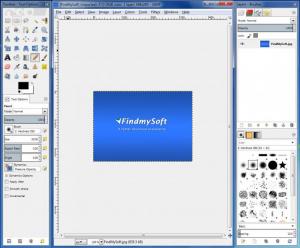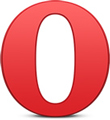
GIMP
2.10.4
Size: 177.89 MB
Downloads: 29057
Platform: Windows (All Versions)
Often presented as a tool that could replace Adobe Photoshop, GIMP offers a lot of functionality for free via a very user friendly interface. Crop, add text, adjust the colors, add filters, convert images, these features and more are put at your disposal by GIMP. You have a variety of tools at your disposal, tools that you can use to touch up, enhance, and modify images as you see fit.
Some applications are available for a single platform – GIMP is not like that. This application is available for multiple platforms, mainly GNU/Linux, Mac OS X, and Windows. Focusing on the Windows version, it must be mentioned that getting the application up and running (on anything from Windows XP SP3 onward) is a very simple matter. You will quickly install GIMP on your PC in the language of your choice (many languages are supported, on top of English). And speaking about languages, multiple localized versions of the GIMP User Manual are available for download.
By default, GIMP displays the main application interface and a couple of docks. The main GIMP window presents the image you selected for editing. To the left there’s a Toolbox dock that, as you would expect, provides easy access to various editing tools, like the Bucket, Text, or Airbrush tool, for example. To the right there’s a dock that provides easy access to the Layers, Brushes, and Undo functions. From the Windows menu on the main GIMP window you can choose to hide these docks, you can enable other dockable dialogs, and you can enable the Single Window Mode which blends together the main window with the two aforementioned docks.
There are two ways of using GIMP. The first one is to start with a blank canvas and use the application’s functionality to come up with an interesting image, icon, or graphical element. It must be mentioned here that GIMP aims to help you out by providing a nice selection of templates. The second one is to load an image and to use GIMP’s features and functions to edit that image. It must be mentioned here that you can load just about any image you may have because GIMP provides support for a long list of graphics formats. It must also be mentioned that GIMP puts numerous editing tools at your disposal: adjust the colors, crop, layers, convert, paint, add text, multiple filters, and so on. You will have no problems accessing all of GIMP’s functionality from the aforementioned interface – a user friendly, customizable interface, mind you.
As mentioned above, GIMP is a free application. Cons:
None that I could think of.
Pros
GIMP is available for multiple platforms: Windows, Mac OS X, Linux. Support for multiple languages and for numerous graphics formats is provided. GIMP puts lots of handy editing tools at your disposal for free (consider making a donation).
Cons
ider making a donation to support the GIMP project if you enjoy using the application. With GIMP, you have access to numerous editing tools in a user friendly interface. You can use the application on multiple platforms and in the language of your choice.
GIMP
2.10.4
Download
GIMP Awards

GIMP Editor’s Review Rating
GIMP has been reviewed by George Norman on 18 Feb 2013. Based on the user interface, features and complexity, Findmysoft has rated GIMP 5 out of 5 stars, naming it Essential
























